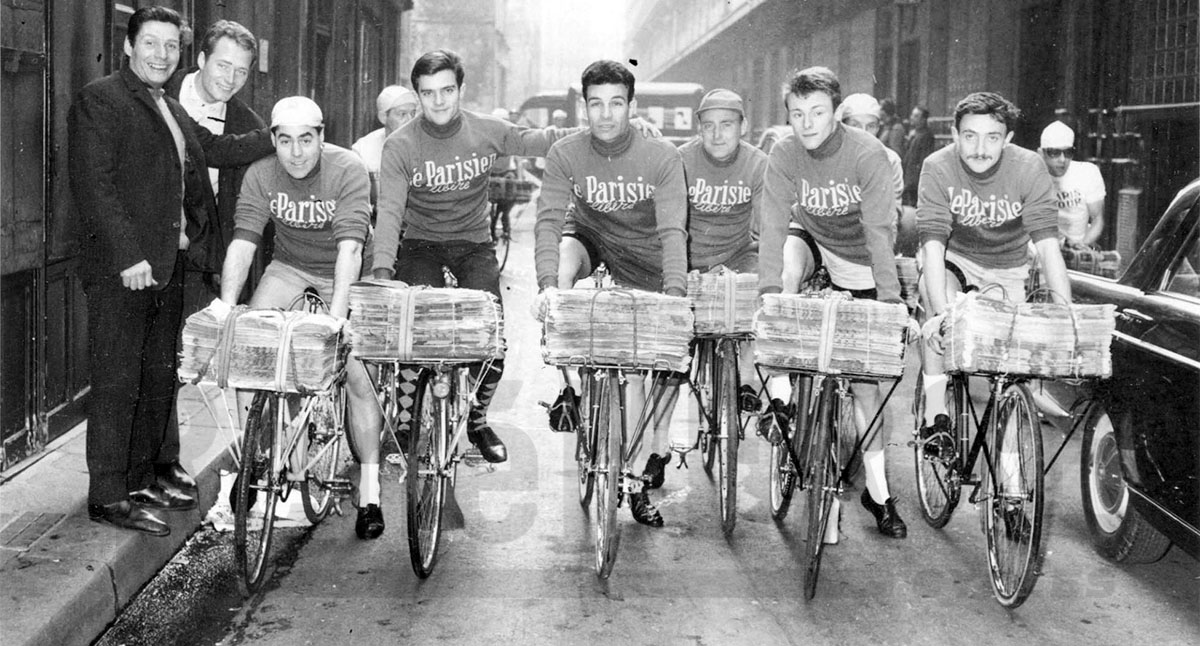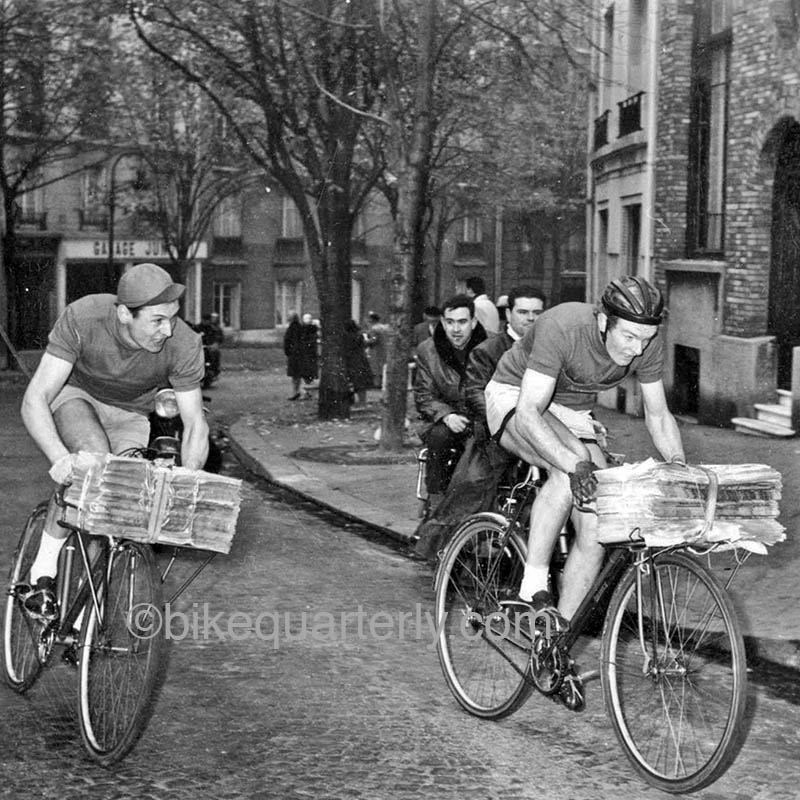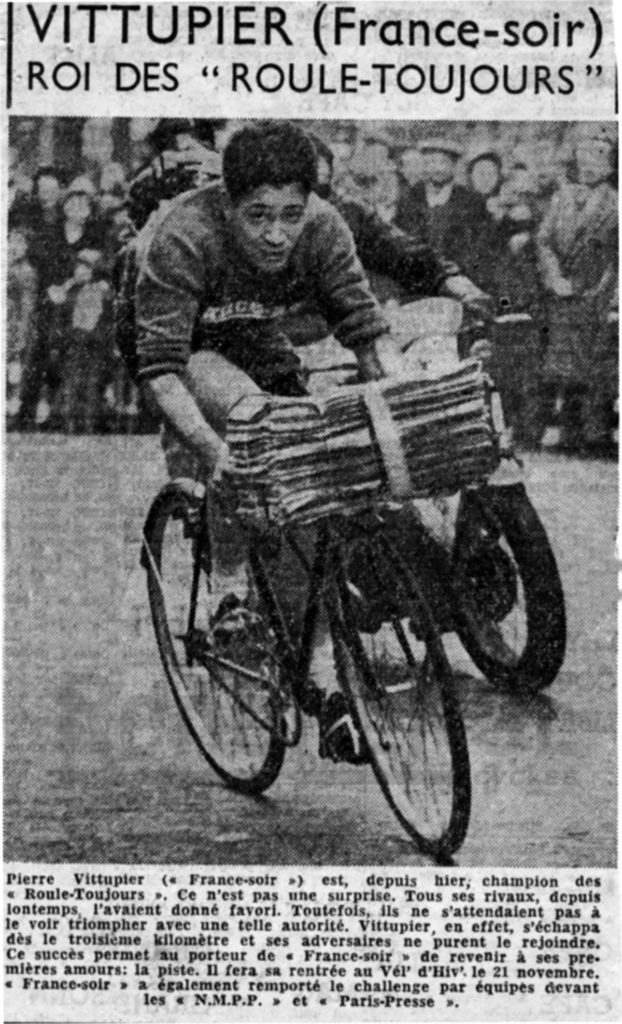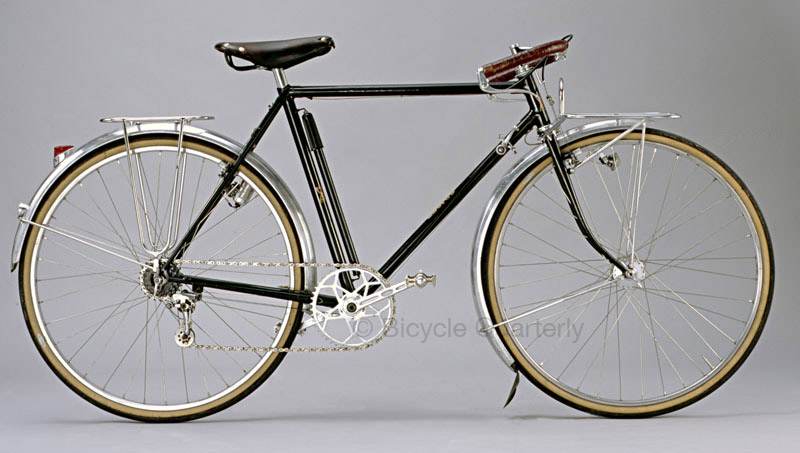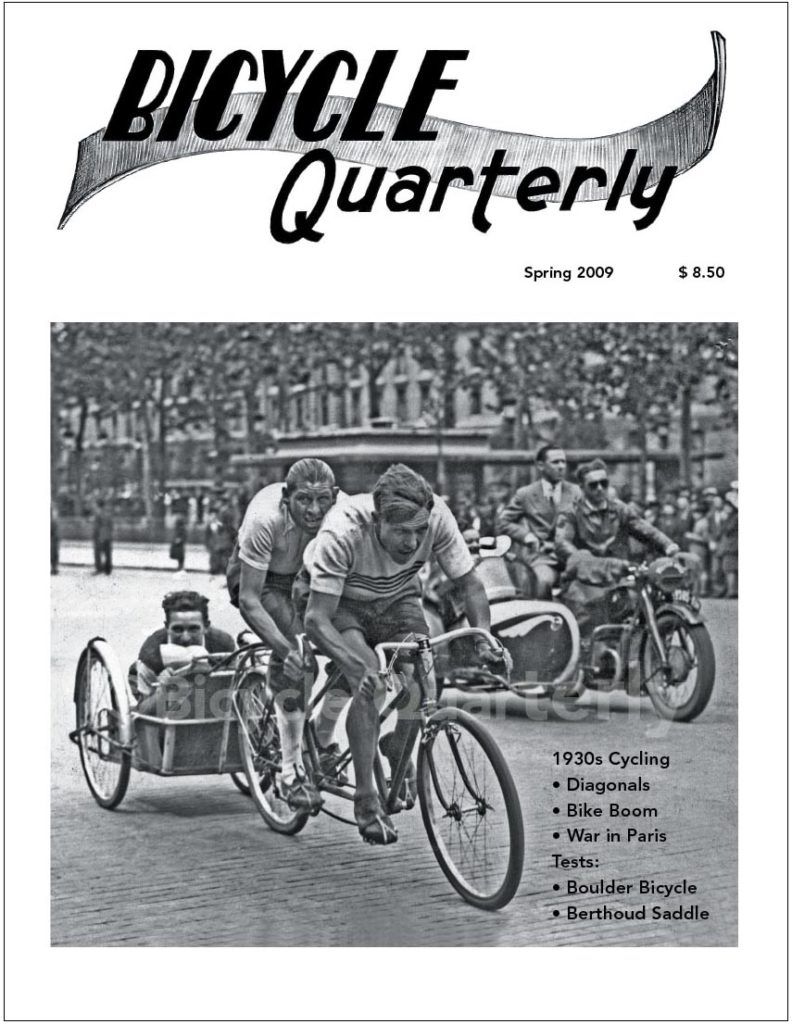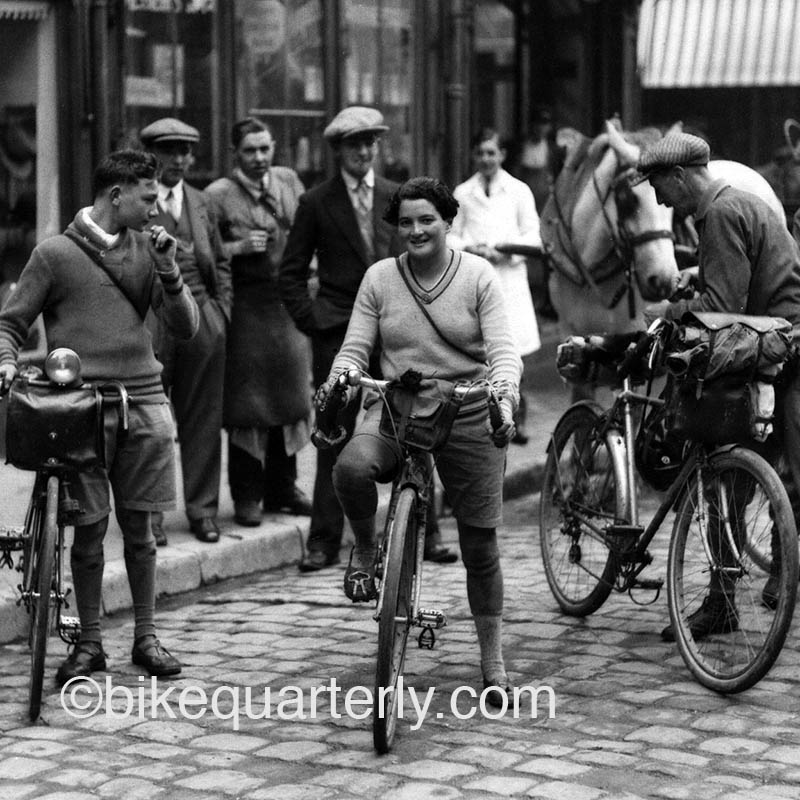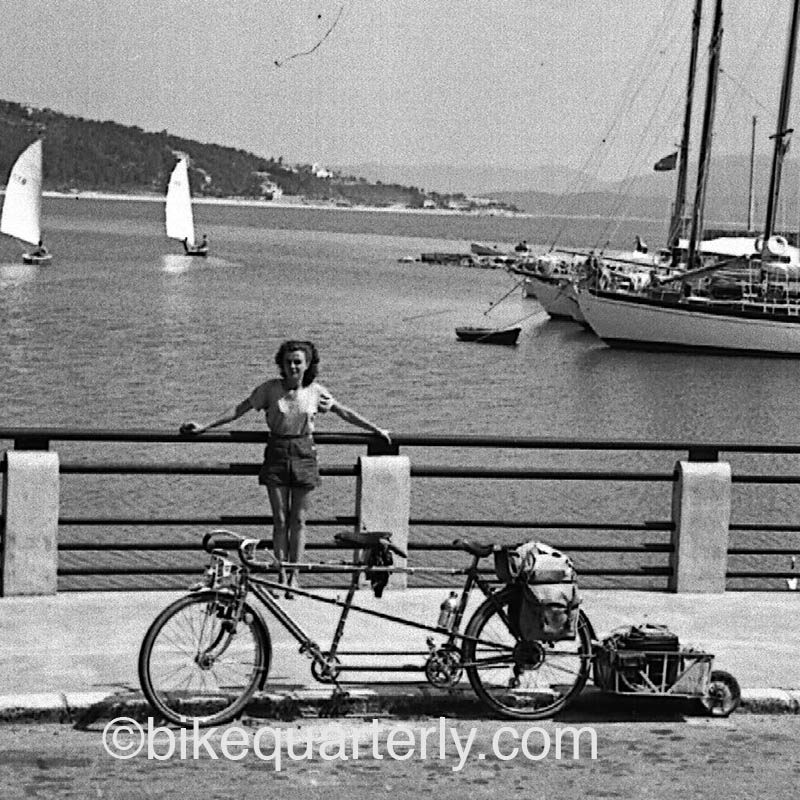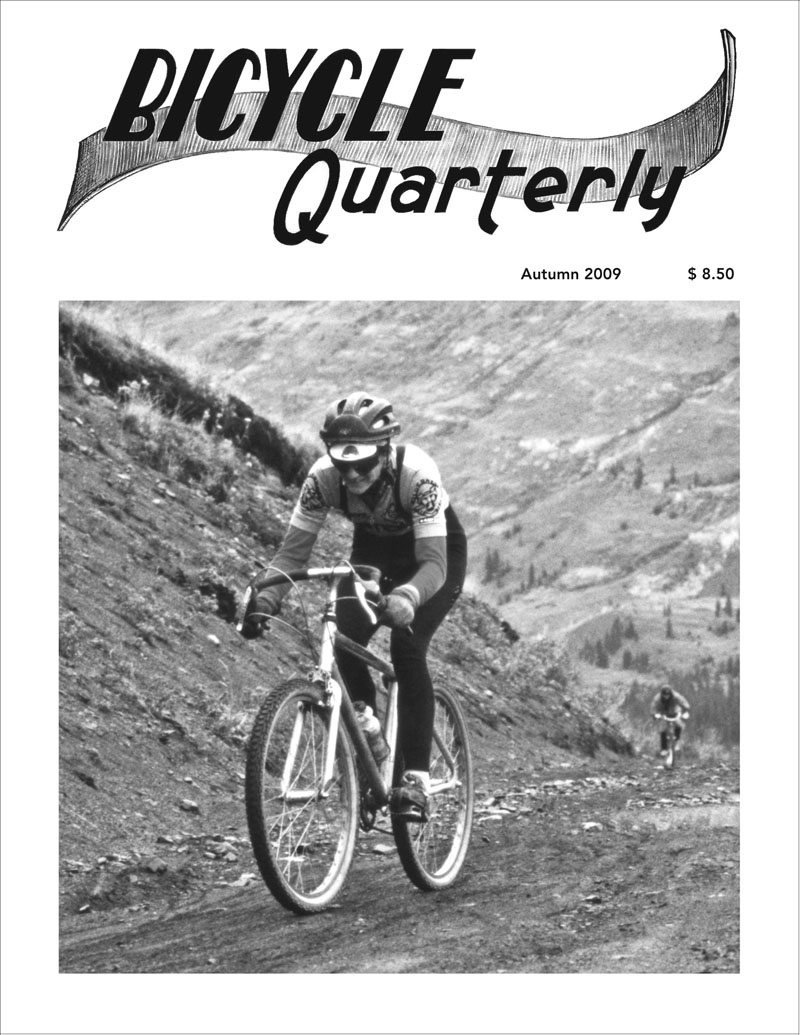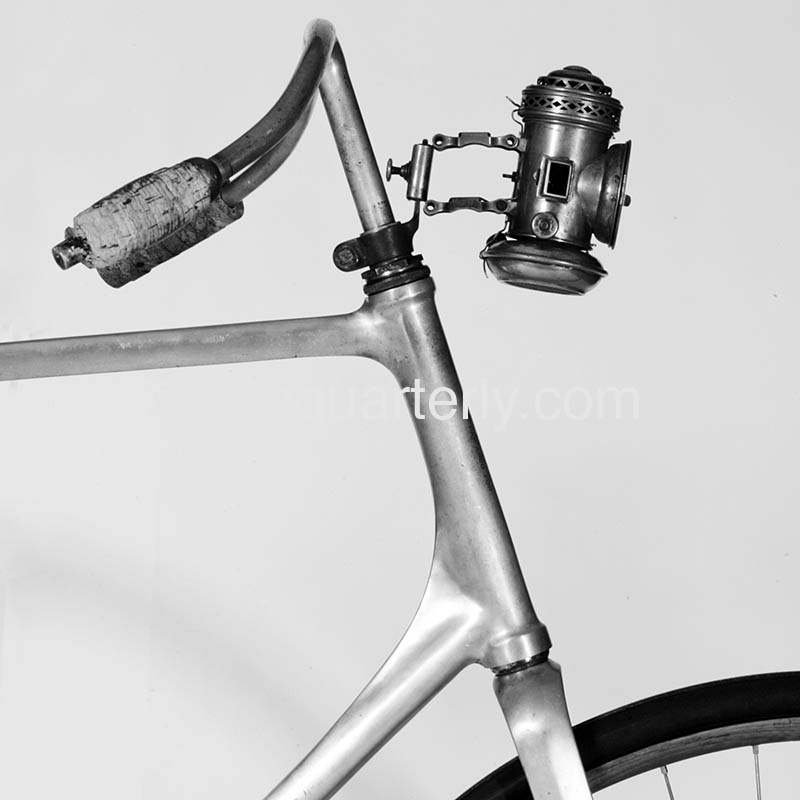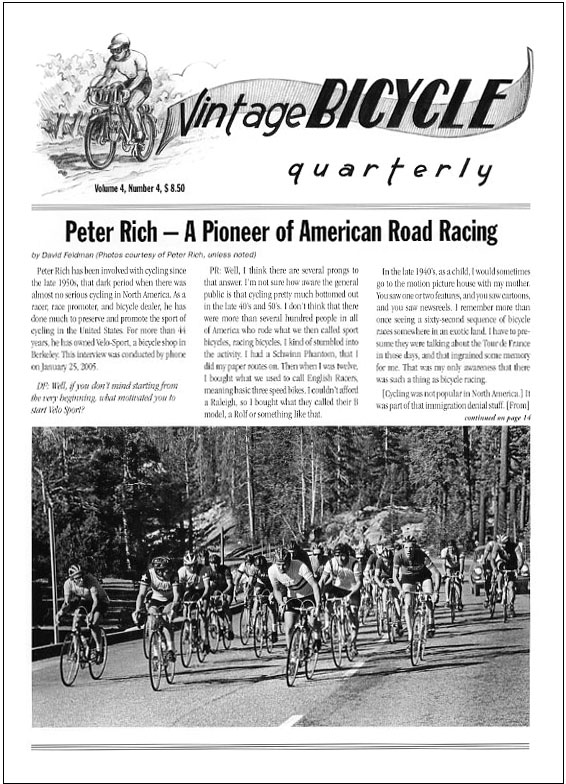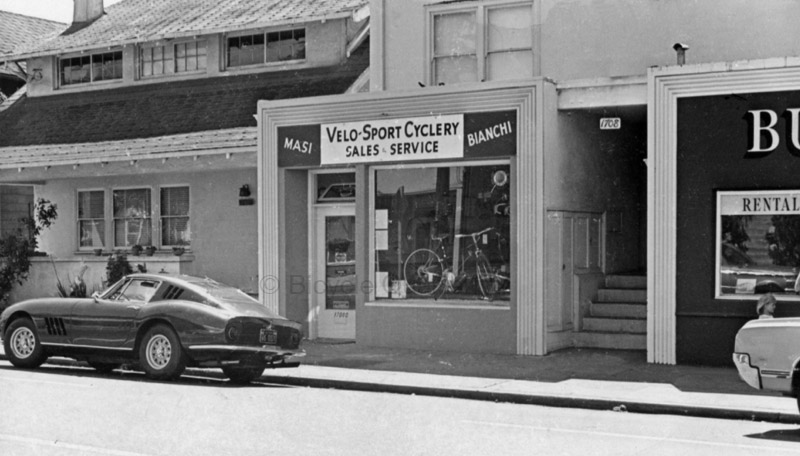Porteur Races, Jacquie Phelan and other favorite BQ Editions
The first 15 years of Bicycle Quarterly were spent unearthing previously unknown parts of cycling culture, talking to larger-than-life characters, and delving into long-forgotten photo archives. Many of these wonderful BQ editions are out of print, but we recently found a few boxes that had been mis-shelved. Among them is BQ 19 with the story of the Paris newspaper couriers.
The porteurs delivered newspapers from the printing presses to newsstands all over Paris. When I heard that they rode custom bikes made by constructeurs like Alex Singer and René Herse, I asked Ernest Csuka (of Cycles Alex Singer) how they could afford such expensive bikes. “What do you mean?” laughed Ernest, “The porteurs earned more than all of us!” That sounded like a fascinating story waiting to be discovered…
This led to a very enjoyable day spent chatting with two former porteurs. They told me how, back then, newspapers published multiple editions every day, so there was ample work. The porteurs got paid per paper delivered, so the faster they rode, the more money they made. Most of the porteurs were amateur or semi-professional racers who were training on the job. (You needed to have connections to get a good route!) And since you could work for several papers at the same time, nobody really knew how much you were paid. The two old porteurs chuckled when they remembered how some of them made more money than the directors of the newspaper where they worked. That explained how they could afford expensive custom bikes…
Once a year, there was the Criterium des Porteurs – a race around the perimeter of Paris where competitors carried 15 kg (33 lb) of newspapers. The speed of these riders was amazing – they averaged more than 25 mph – riding single-speeds (rules forbade derailleurs), with much on the course on cobblestones. Oh, and each rider had to drop off their newspaper package at the half-way point and pick up a new one. The race finished with a steep climb up Montmartre (above). No wonder the race was a big deal, with the main roads of Paris closed off for the event. The newspapers reported in great detail, as they would about a Tour de France stage.
One of the two porteurs we met was Pierre Vitupier, who won the championship in 1953 (above). He told us how competitive it was: “I had been on the French national track team, so I figured I’d win against these porteurs while pedaling with only one leg… The first year, I came 6th or 7th. [The following year] I trained for the Championnat des Porteurs like I would for a road racing championship, 8000 km training on the road… I won the race.”
To continue with the ‘urban transportation’ theme, we featured a wonderful 1950s Alex Singer that started life as a randonneuse before it was converted by the Singer shop into a supremely elegant city bike. Another article summarized our new understanding of front-end geometry and how it relates to carrying loads. Those are just a few of the fascinating articles in Bicycle Quarterly 19. This edition sold out quickly, but we now found a small quantity, so it’s in stock again.
BQ 27 was also in the stack of mis-shelved magazines. That is another favorite, focusing on the 1930s and the origins of the French cycling culture that has inspired us so much. On the cover is the tandem taxi race during World War II. The German occupation was a difficult time in Paris, and one of the least worries was that there was no gasoline. Bikes with trailers were used as taxis. Tandem taxis were faster, but also cost more, since you had to pay two riders. Having read this far, you’re probably not surprised that racers earned their day-to-day living by pulling these taxis, since there wasn’t much work for newspaper deliveries. And this being Paris, there was a race of the tandem taxis…
BQ 27 also has the story of the Diagonales, rides from one corner of France to another. Vélocio, the founder of the cyclotouring movement, had asked: “Who will be the first to connect the corners of France non-stop, by bike.”
His young friends took up the challenge, starting in 1930. In 1931, Régina Gambier was the third-ever rider to complete a Diagonale, riding from Dunkerque in the northwest of France to Hendaye in the south. She covered more than 1000 km in 65 hours (above with two riders who accompanied her for a short stretch along the way).
The late 1930s saw a bike boom in France. After years of strikes and unrest, all French workers finally got paid vacations. Cars were unaffordable and even train tickets were very expensive. Many couples bought a tandem instead and headed to distant places, carrying their camping gear in panniers and trailers. Raymond Henry, the late historian of French cyclotouring, dug into his archives to bring the most beautiful stories and photos from that time. BQ 27 tells stories that will inspire you as you plan next year’s rides.
Bicycle Quarterly 29 was dedicated to the most fascinating couple of mountain biking: Jacquie Phelan, Queen of the WOMBATS (Women’s Mountain Biking and Tea Society) and winner of the first three NORBA championships, and Charlie Cunningham, perhaps the greatest inventor of aluminum frames, roller-cam brakes, unicrown forks, GreaseGuard hubs and so many other things. Jacquie (above) told the fascinating story of the early years of mountain biking.

Charlie took us into his workshop and dug out secret prototypes for brakes and other parts. He explained the thinking behind them and reminisced of working with SunTour, Japan’s iconic component maker. Charlie’s insights, wit and pure joy are truly special.
Aluminum bikes aren’t anything new, and we bring you the story of the Luminum, the world’s first commercially successful aluminum bike. Made in America in the 1890s – yes, really! – it featured a frame that was cast , with the top tube being solid (so not really a tube). Together with studio photos of a rare survivor, we bring you the story of this pioneering brand. Bicycle Quarterly 29 is another un-missable edition. Long out of print, we now have a few more of this classic edition.
And finally, among the magazines we found is Bicycle Quarterly 16, where Peter Rich tells the fascinating story of racing in America during the 1950s, 60s and 70s. How he got arrested by ill-informed police officers for riding his bike on the highway – and how he was always let off by judges who knew that riding a bike was not illegal. How he financed his trips to Europe by sending back supple tubular tires that weren’t available in the U.S. How racing was viewed as an individual sport in the U.S. – Peter’s team, the Pedali Alpini, were chastized for using team tactics to win races.
Peter tells the story how he started a bike shop and how he discovered Ernesto Colnago when he ran into Eddy Merckx and his team in Italy, all on frames labeled ‘Molteni.’ When Peter asked where the frames came from, there was no answer, until one racer turned to him and said quietly: “Go to Cambiago and look up the frame builder there.” Then came the 1970s bike boom and his little shop (above) went from selling 50 bikes a year to 9000! All of this is hard to imagine today – Peter Rich’s story provides the background for where we are today.
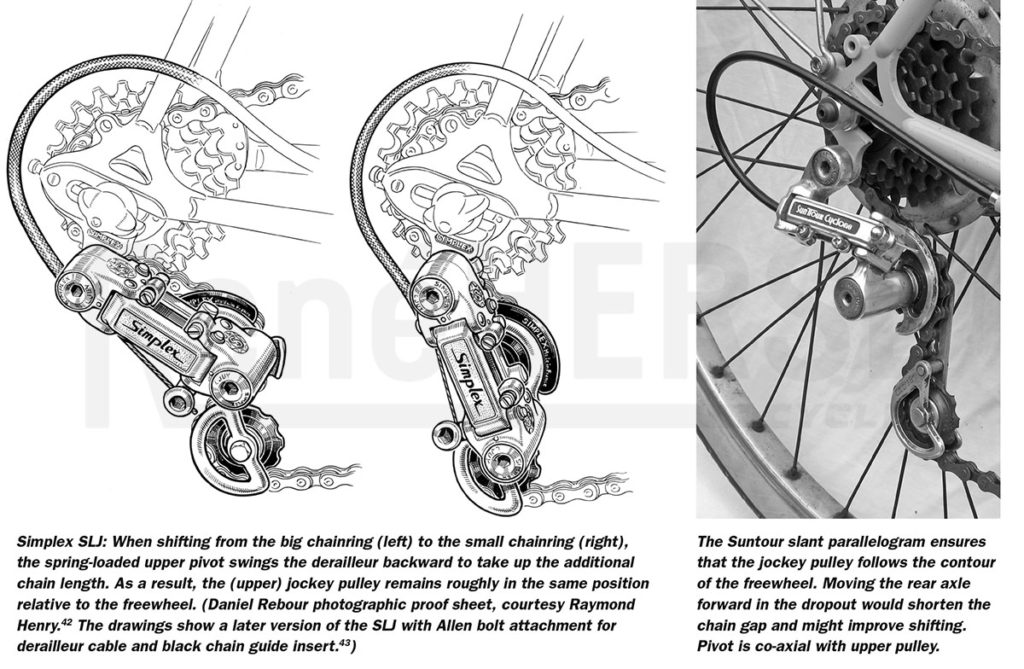
BQ 16 also continued our series ‘Riding with Classic Derailleurs.’ We rode many of the earliest derailleurs, like the Campagnolo Cambio Corsa and Osgear Super Champion. We found that they actually shift better than you’d think. If you’ve wondered why the spring-loaded upper pivot of the Simplex and the slant parallelogram of the SunTour were so revolutionary, you’ll find the answers in Bicycle Quarterly 16.
Since most readers will want to read all four of these ‘un-missable’ editions, we’re now offering them as a convenient 4-pack. Quantities are very limited, and once they are gone, there’s no chance of us finding more. (You can also make your own 4-pack that includes other past editions of Bicycle Quarterly.)
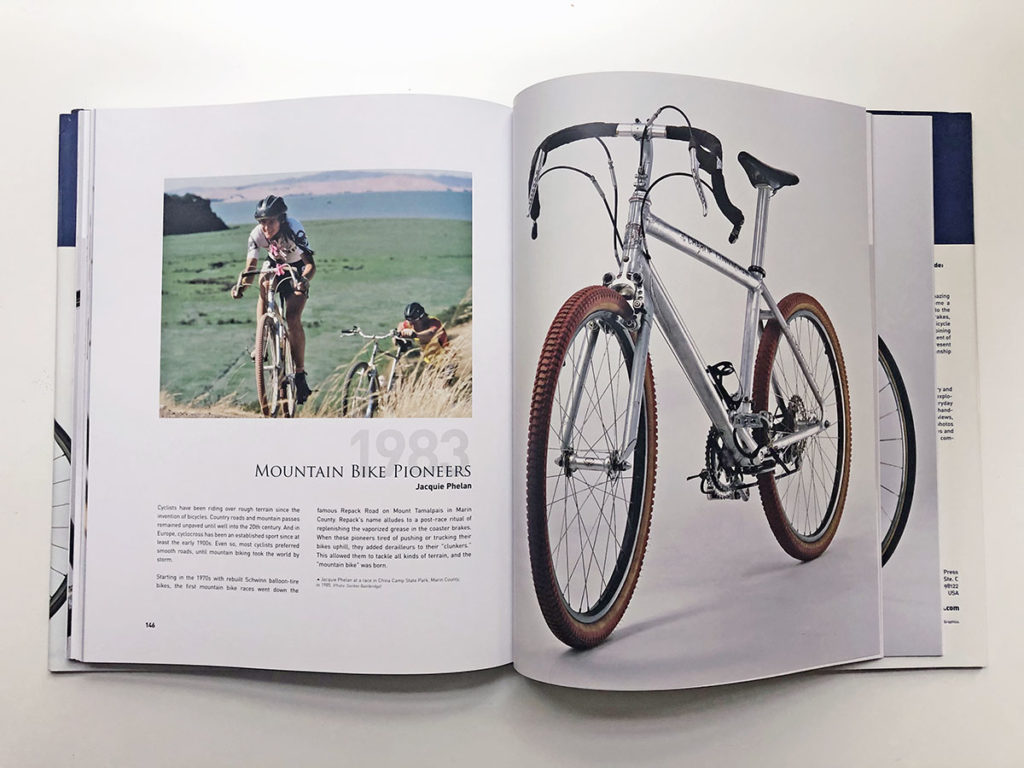
For more on these topics, you’ll want to read our book The Competition Bicycle. One of the bikes featured is Jacquie’s famous Cunningham mountain bike – or should we call it a ‘gravel bike’?
The beautiful studio photos in this book also show a stunning 1965 Cinelli that was raced in the Washington State Championships that year, on an epic course that went over three high passes in the Cascades.
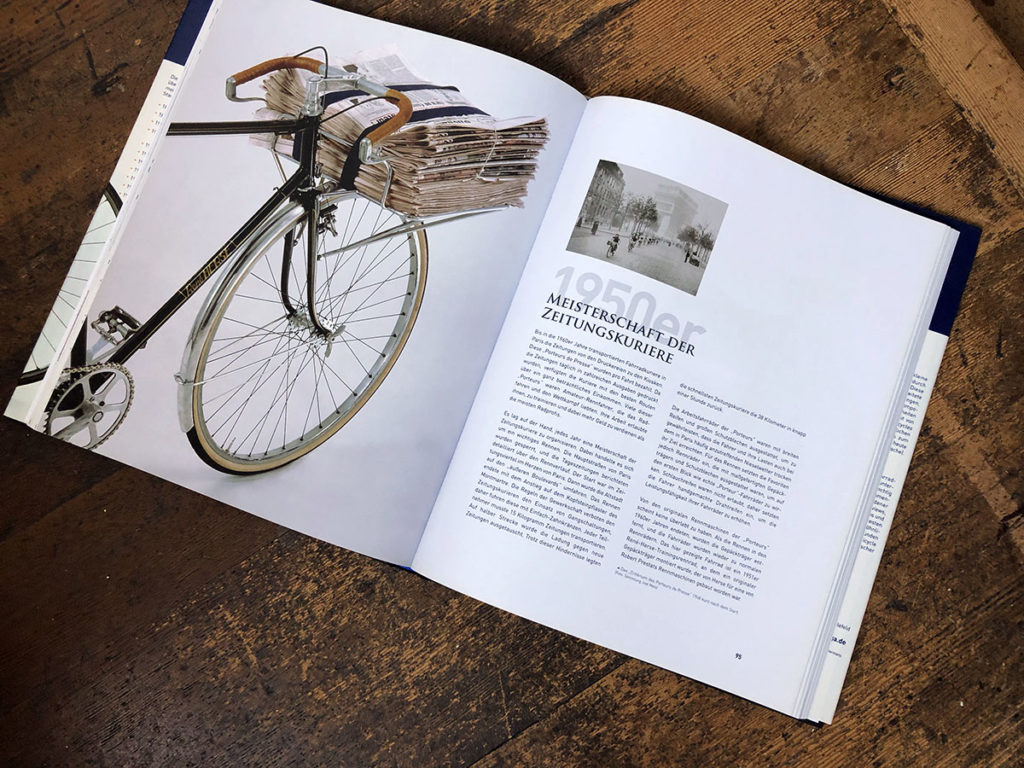
Plus there’s a racing porteur (above in the German edition). For their everyday work, porteurs had bikes with huge fenders and big tires. For the annual race, the competitors used racing bikes that they equipped with huge custom-made front racks. None of these bikes have survived, but Lyli Herse kept the wonderful rack of one of Robert Prestat’s racing bikes. We mounted it on a Rene Herse single-speed racing bike – it fit perfectly, indicating that it was mounted on a similar bike originally. The result is a replica of a racing porteurs… Plus there are photos of Lyli Herse helping Prestat during the mid-way swap of newspaper packages. Think NASCAR pit stop, and you get the idea!
More information
• 4-pack of the BQ editions shown in this post above
• The Competition Bicycle


